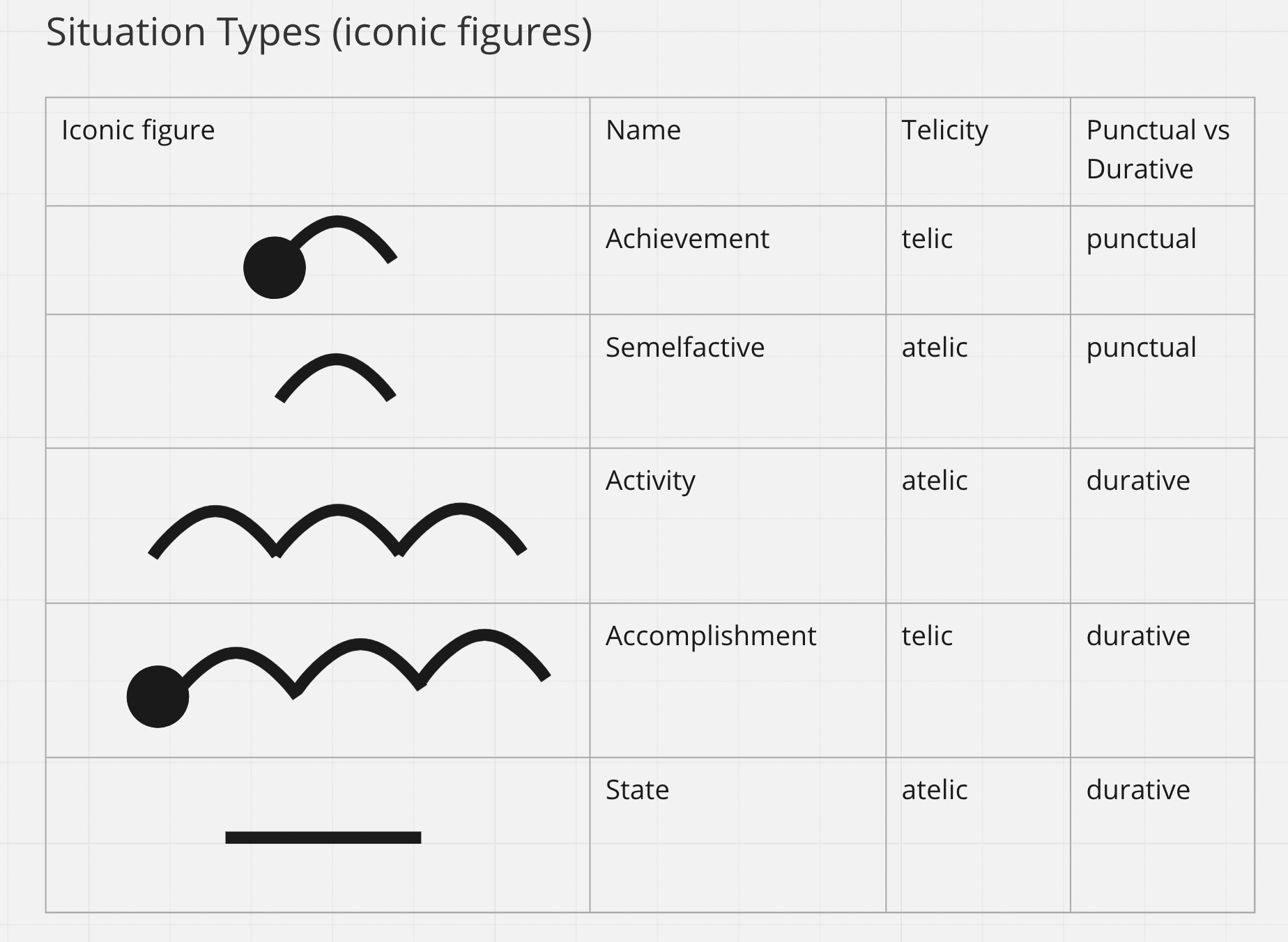Situation aspect
Lexical aspect refers to inherent features of a verb in isolation. Situation aspect (or 'situation type') takes the entire verb phrase (i.e. situation) into account. Whereas 'the plane flies' is atelic (has no natural endpoint), 'the plane flies to London' is telic (has a natural endpoint). Situation type takes account of the effect of direct objects, plurality, negation, etc. It is more useful for assessing a given instance of a verb, whereas lexical aspect is more useful for an abstract understanding of a verb. Our interest here is the actual usage.
State vs Event
An event is a situation in which something changes (“happens”), whereas a state is a situation in which nothing changes (“happens”). A test which may be helpful in determining whether a situation is a state or event asks, What changed? Only events can coherently answer this question.
Examples
She loves running. (state, in which nothing changes) She went running. (event: she was not running and then she was running) Ben knows that Dallas is not the capital of Texas. (state, in which nothing changes) Ben learns that Dallas is not the capital of Texas. (event: first he did not know, then he did)
Telicity
Telic versus atelic. An event is telic if it has a natural endpoint, and atelic if it does not have a natural endpoint. A useful test for telicity is if an event can happen 'in' a bounded time period.
Examples
She runs in three hours. (atelic: the event will start in three hours, not happen within the three hours) She runs the course in three hours. (telic: the running happens within the three hours) Note that either example, in the right context, could be understood as telic or atelic. The larger discourse context will need to be drawn in, in order to assess the situation type with confidence.
Durativity
Durative versus punctual event. This distinction asks if the situation starts and stops. A durative situation extends over time (including states, resultant states, and continuous action). E.g., She was swimming. A punctual situation is presented as happening instantaneously (includes repetitive actions). E.g., He kicked the ball (single), or He was kicking the ball (repetitive).
A useful test for durativity is if an event can happen 'for' a bounded time period. A durative event will span the time period, whereas a punctual event will be interpreted as repeating (habitual, repetitive or iterative aspect).
Examples
She runs for three hours. (durative: the single event spans the time period) She sneezes for three hours. (punctual: the event has to be repeated in order to span the time period)
 Each combination of state vs event, telicity and durativity has an iconic figure to represent it. The state is a straight line, representing the lack of change. All events have an arc, representing the beginning and end. Durative events have multiple arcs, representing the extent over time, whereas punctual events have only one arc. Telic events end with a filled-in circle, representing the natural endpoint.
Each combination of state vs event, telicity and durativity has an iconic figure to represent it. The state is a straight line, representing the lack of change. All events have an arc, representing the beginning and end. Durative events have multiple arcs, representing the extent over time, whereas punctual events have only one arc. Telic events end with a filled-in circle, representing the natural endpoint.
Once the iconic figure is determined, it is to be coloured according to its morphology and placed in the next column of the chart. (At this point, there should be no dividing tense lines, which means Fut/Present/Past are irrelevant. They only apply when there are dividing tense lines.)
